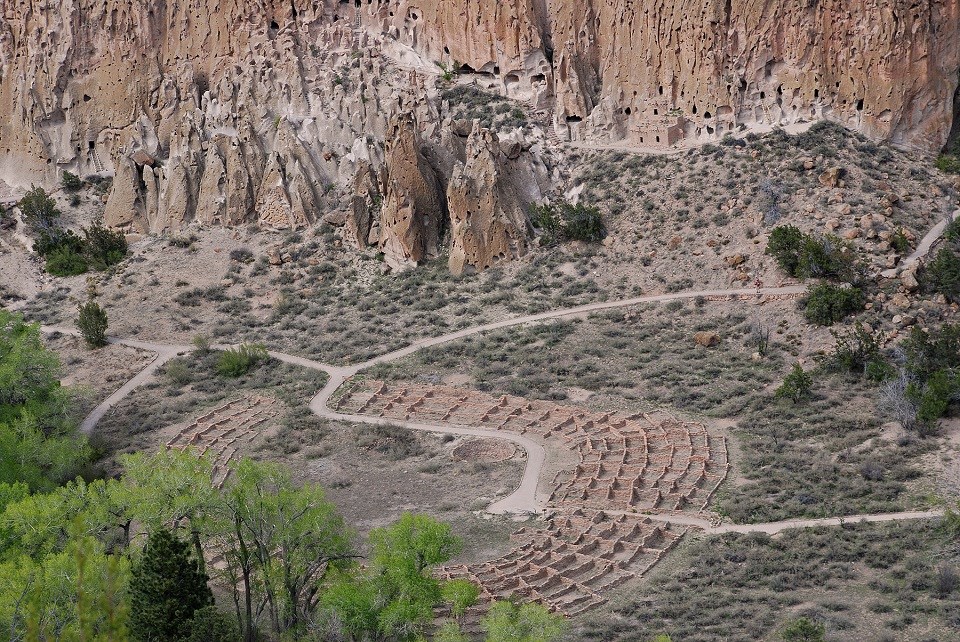Last updated: September 11, 2024
Article
National Park Getaway: Bandelier National Monument
By Chris Judson, Park Ranger, Bandelier National Monument

NPS
Today Bandelier National Monument is known for a distinctive landscape: a wide plateau composed of tuff, volcanic ash hundreds of feet thick deposited by two gargantuan eruptions of the Jemez Volcano. Archeologists have documented more than 3,000 archeological sites across its mesas and canyons. The story of people in the area dates back to small bands of hunter-gatherers who passed through the area thousands of years ago. During the 1100s, Ancestral Puebloans settled in cliffside homes and farmed the land for generations. In the 1500s, they moved to nearby locations where their descendants live today. The human story continues with the Civilian Conservation Corps enrollees who built the handsome stone park headquarters buildings in the 1930s, and now the 200,000 visitors who come to the park each year.

NPS
Bandelier stretches from the Rio Grande at 5,300 feet (1,615 meters) elevation up the slopes of the volcano to its rim at almost 11,000 feet (3,353 meters). This provides a variety of habitats for the park’s wildlife, including dozens of species of mammals and reptiles, more than 200 species of birds, and over 900 species of plants. Two thirds of the park is designated wilderness, with 70 miles of trails for day hikers and backpackers.

NPS
Whether visitors come here to get acquainted with the Ancestral Pueblo people, birdwatch, backpack, stargaze, or just sit by the creek, most agree with Adolph Bandelier’s sentiment when he said it was the “grandest thing” he ever saw.
